A look at the life of Luke Howard FRS and his important contributions to the science of meteorology, including his naming system for clouds, still in use today.
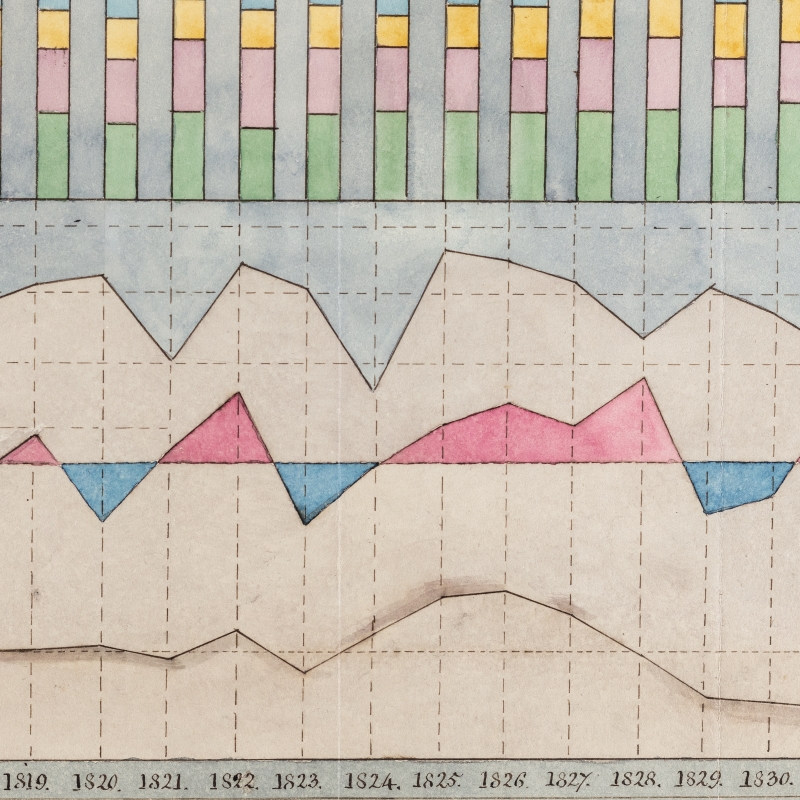
Complaining about the weather sometimes feels like a quintessential British pastime, and the recent heatwave certainly qualifies as something to moan about. Thursday 25 July 2019 saw the highest temperature ever recorded in the UK, with the mercury hitting 38.7°C in Cambridge. London didn’t escape either, reaching an uncomfortable 37.6°C at Heathrow. As I was travelling home on a sweltering hot train that evening, I found myself pondering what one of the Society’s particularly keen weather-watching Fellows would have made of it.
Luke Howard FRS was born in London in 1772, and educated at a strict Quaker grammar school in Oxfordshire. Upon leaving school, he became an apprentice pharmacist in Stockport, and his aptitude for chemistry helped him to forge a lifelong career in the field. In 1798 he returned to London and formed a pharmaceutical company with another Society Fellow to-be, William Allen. When that partnership ended in 1807, Howard established his own business, which proved to be highly successful; his son John Eliot Howard, also a Fellow, carried on the ‘Howards and Sons’ name after his father’s death in 1864.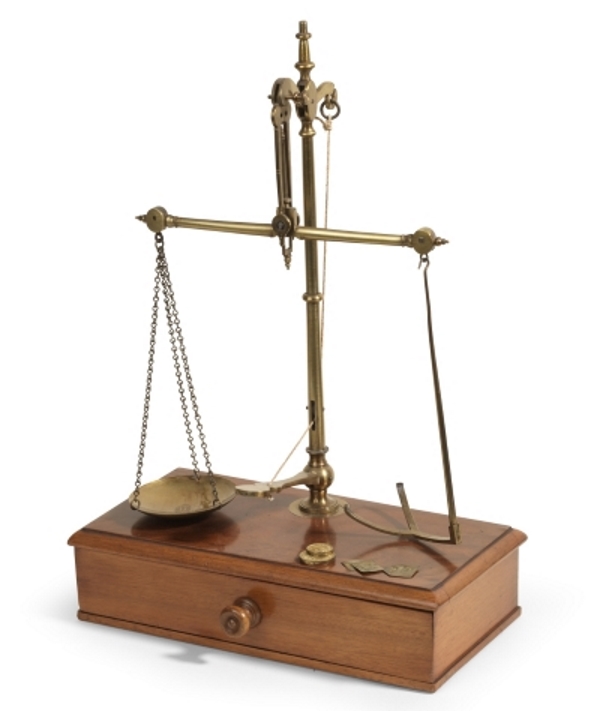
Travelling apothecaries’ scale for weighing chemicals and pharmaceuticals, thought to have belonged to Luke Howard FRS (RS.12494)
While chemistry was Howard’s profession, his real scientific passion was meteorology. Howard considered himself a mere amateur when it came to atmospheric science, but he made several important contributions to the discipline. Most famously, in 1802 he established the terminology for different cloud formations that is still in use today. So if you’ve ever confused your cumulus with your cirrostratus, you know who to blame. Joking aside, the use of Latin terms was Howard’s way of ensuring non-English-speaking scientists could adopt the new nomenclature. This helped to standardise meteorological record-keeping at an international level, and is surely one reason why the system remains in use today.
Closer to home, Howard was logging his own observations of London’s climate. From 1806, he began making daily records of the weather, first at Plaistow, where his chemical factory was located, and from 1813 in the garden of his home in Tottenham Green. He published his monthly results in several journals, including Annals of Philosophy, a popular nineteenth-century scientific periodical founded by Thomas Thomson FRS. Howard produced a book on his findings, The Climate of London, in 1818.
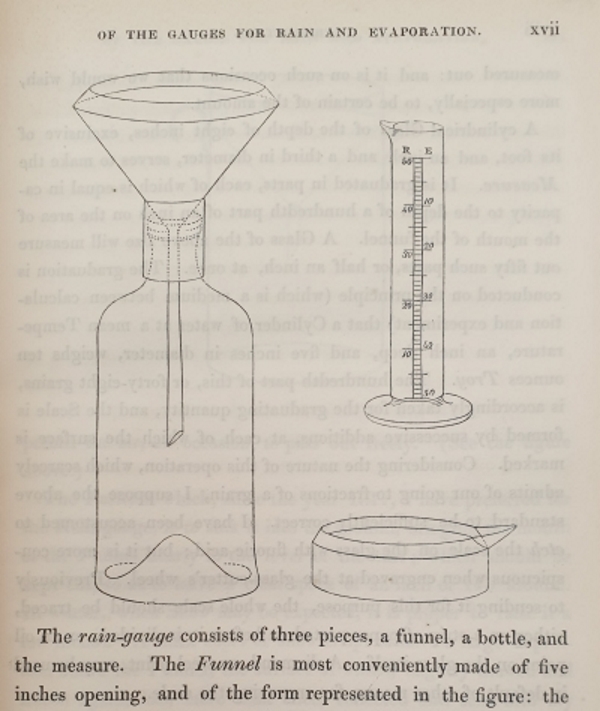
Luke Howard’s instructions for making a rain gauge, from The Climate of London
With over a decade’s worth of data to analyse, he was able to draw some important conclusions about the city. Notably, he was the first scientist to highlight the urban heat island effect, and to point out the effect of high concentrations of smog on the city’s climate.
So onto the most important question; what was the weather actually like two hundred years ago? We can find Howard’s readings for 25 July 1819 in Annals of Philosophy volume 14. He noted that the day was ‘fine’, with no rain and a southeasterly wind. The maximum temperature was a pleasant 79°F, or 26°C, which rather pales in comparison to last month’s record-breaking temperatures.
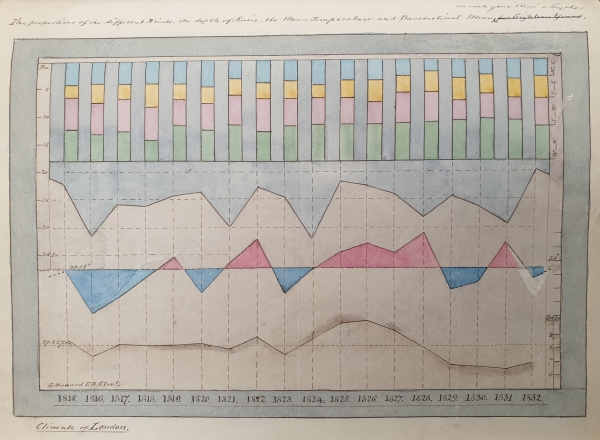
Graph showing prevailing wind directions, rain depth, and mean thermometer and barometer readings from 1815 to 1832 (AP/25/10)
It’s a rather different story if we look back to July 1818. On 24 July of that year, the temperature reached 93°F (34°C), which Howard described as a ‘period unequalled in warmth since the year 1808’. This heatwave was affecting the continent as well: Howard mentioned reports of high temperatures in Holland at this time, with Arnhem reaching a sweltering 94°F. Howard’s enormous volume of data actually reveals a number of heatwaves in London through the early nineteenth century. None of these quite manage to reach our 2019 record readings, though 1825 comes closest: on 18 July of that year, Howard recorded a maximum temperature of 97°F (36°C) in Stratford.
Howard continued to log his observations of the weather for many years, both in London and at his later home in Ackworth, Yorkshire. His final work was Barometrographia, published in 1847, containing 20 years’ worth of data captured from his barometer by an automated registering clock. The annual circular graphs produced by the clock form the striking full colour plates in the volume.
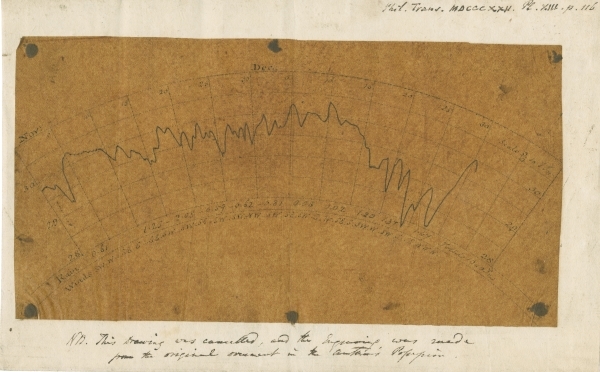
Unused illustration for Luke Howard’s paper ‘On the late extraordinary depression of the barometer’, published in Philosophical Transactions of the Royal Society, vol.112 in 1822 (PT/73/9/11)
Reading Howard’s writings, you sometimes get the sense that he didn’t fully appreciate the significance of his own work. In a letter to John Herschel in 1847, he bemoaned the fact that meteorological science was becoming an increasingly technical field to which he would no longer be able to contribute: ‘The awful shade of Astronomical precision … appears now to be gathering upon the subject; and much, if not most part of the labour hitherto bestowed upon it by such simpletons as the writer, may be looked upon as thrown away’. Perhaps Howard was concerned that public interest in meteorology would evaporate if the subject became too technical. In reality, I think he had nothing to worry about. After all, we will never stop complaining about the weather.







